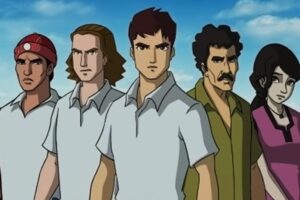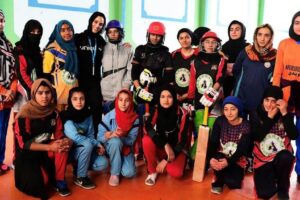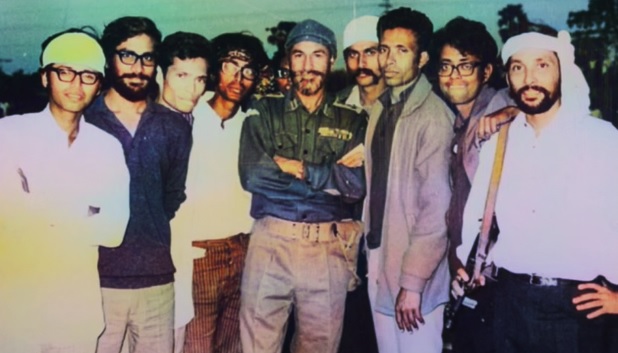Remembering Jewel | The Forgotten Hero of Bangladesh
On August 29, 1971, Abdul Halim Chowdhury Jewel was abducted from his mother’s home in Dhaka. Pakistani soldiers stormed the house late at night. Jewel was a freedom fighter and elite commando in the Crack Platoon. An informant had exposed him after a series of guerrilla attacks across Dhaka. That night, Jewel and his unit had completed “Operation Farm Gate,” a daring assault. By sunrise, he was dead—executed and buried in an unmarked grave. His body was never recovered.
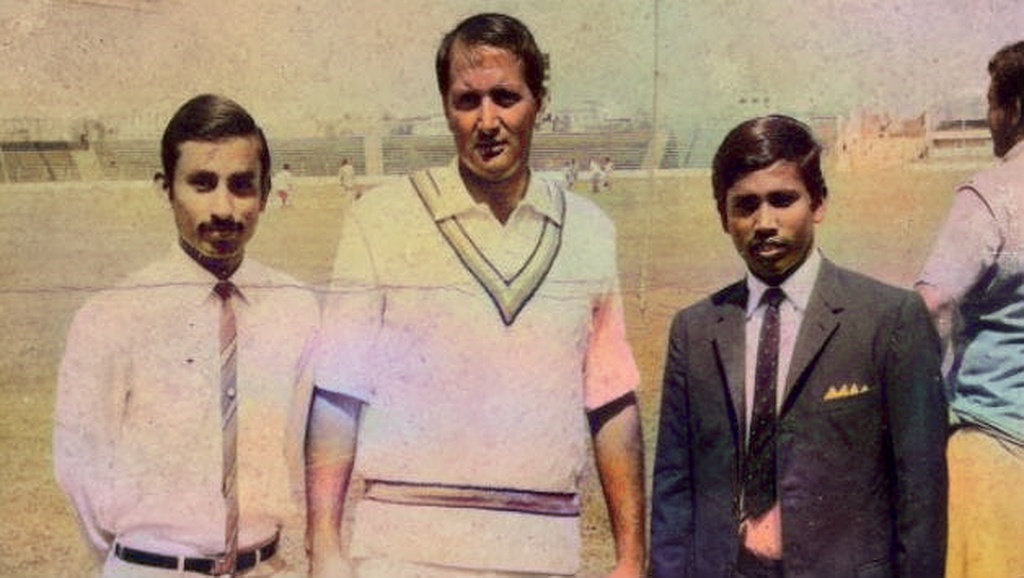
Who Was Abdul Halim Chowdhury Jewel
Before the war, Jewel was a gifted cricketer. He had his sights set on Pakistan’s national team. But he lived in East Pakistan, now Bangladesh. Despite tensions, West Pakistan profited from East Pakistan’s jute exports. They showed little concern for the people behind that success. After years of mistreatment, Jewel made a life-changing decision. He put down his cricket bat and joined the resistance.
Jewel vowed to return to cricket after victory. The rising star dreamed of captaining Bangladesh’s national team one day. That dream died with him. Jewel was captured, tortured, and killed that August night. Yet, his story remained in the shadows for decades. Justice would not come for another 44 years. Why? His legacy lives on—in cricket, in freedom, and in memory. Here is his story.
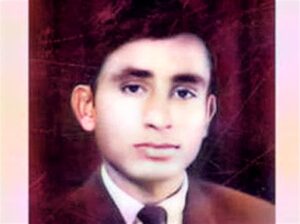
A Brief History of East Pakistan Rage
The problem with education is that it allows people who are normally oppressed to wise up and recognize what’s happening to them. Since 1757, Great Britain ruled the subcontinent of India—mostly the Bengal area—which is why they referred to their commercial enterprise as the East India Company. They also called that most populous part of the world a “subcontinent” because of its natural separation from the rest of Asia by the gloriously impressive Himalayan Mountains.
Aside from India and Bangladesh, the subdivision includes the countries of Pakistan, Sri Lanka, Bhutan, and Nepal. After 100 years of rule, the East India Company eventually lost its control over its native soldiers, known as the “sepoy.” As the sepoys noticed Christian missionaries arriving in droves and their land being nefariously annexed by the company, they decided to fight back. And in 1858, the Sepoy Rebellion came… and then it went.
The mutiny is a strange tale that begins the year before, in 1857. The East India Company had received new rifle cartridges from Great Britain, shipped in grease. Rumors spread that the grease was made from cow and pig fat, which would be considered extremely offensive to both Hindus and Muslims alike.
When a native sepoy named Mangal Pandey refused to use the cartridges, he was to be disarmed and punished. But instead, Pandey turned his weapon on his British lieutenant and shot him. Surrounded, he then turned the gun on himself and fired directly into his chest to avoid capture. Unfortunately, he did not succeed. He survived—only to be hanged on April 8th of that same year.
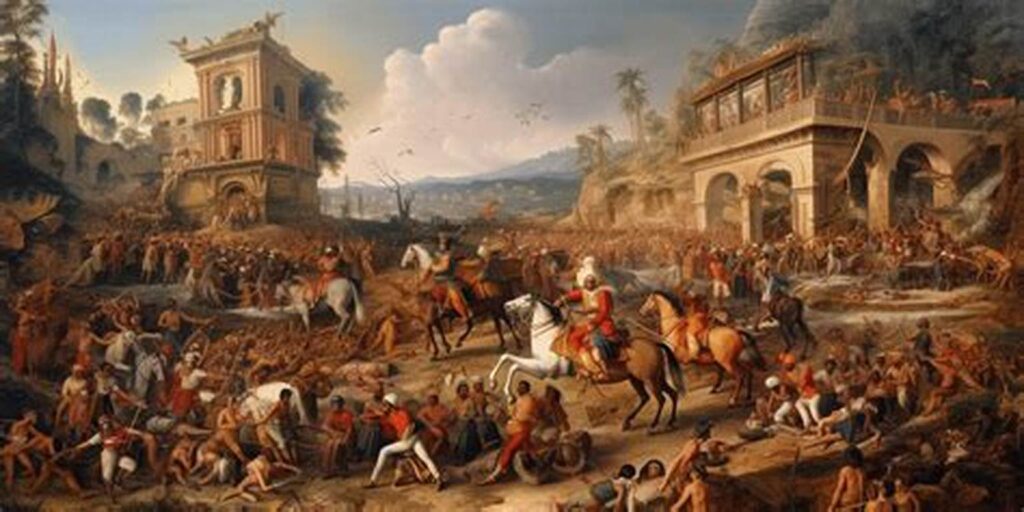
The Mutiny Before the Crown
Thus, the mutiny began. Mutineers were referred to by the East India Company as “Pandies.” To this day, they are considered legendary heroes. Meanwhile, the East India Company did the usual European thing—torturing mutineers and their loved ones. They even tied them to cannon mouths and blew them to pieces. Fellow Pandies were forced to watch the executions unfold. What a world we live in.
Although the rebellion failed, word of the Company’s atrocities spread across the globe. The Royal Crown eventually intervened. Queen Victoria dissolved the Company and placed the subcontinent under direct British rule. Who would’ve thought capitalism would deny people democratic, self-governing rule?
Nonetheless, the “Empress of India” didn’t fare well in the years that followed. Universities opened, and Indians began to understand British oppression more clearly. They saw they couldn’t own land or benefit from farms they operated. They lacked basic human rights.
Greed led to famine in 1878. Famine led to anger by 1885. Before long, England wanted out. By then, they recognized a losing battle when they saw one. But there was a major problem in India. Religious divisions kept the people from uniting after the British began to withdraw.

Separating Bengal from India
In 1905, the British government attempted to separate Bengal from India along religious lines. This was called the Partition of Bengal and proved disastrous. Hindus in West Bengal felt they were losing political power to Muslims in East Bengal. They also disliked the “divide and rule” nature of the plan.
By 1911, the situation had unraveled, with no end to the tensions between Hindus and Muslims. Muslims would kill cows, while Hindus played music outside mosques. The feuding seemed endless. Gandhi later tried to unite Hindus and Muslims in a joint struggle against British rule. However, it was Gandhi’s own Hindu followers who opposed the idea. As a result, Muslims had no choice but to pursue their own path. Then, World War II complicated things further.
Hindus, who saw no reason to fight for the British during World War I, chose to stay out. The Muslims of India, however, fought alongside the Allies. By the end of the war, Britain was financially drained. The pro-independence Labor Party took control of India in 1945. Although Gandhi still desired a united India, his party was divided, and the Muslims sought independence. In 1947, the solution was proposed: India would remain under Hindu control, and Pakistan would be created.
Pakistan would consist of Muslim-majority provinces, Baluchistan and Sindh. The contested provinces of Punjab and Bengal would be divided, creating a Hindu and Muslim side to each. Enter Cyril Radcliffe, tasked with drawing the partition line, known as the Radcliffe Line. The subcontinent was divided: Pakistan to the west, India in the center, and Bengal in the east.
What Happened Next
The partition caused chaos. Hindus moved from East Bengal to West Bengal, fleeing Muslim rioters. Muslims moved from West Bengal to East Bengal, fleeing Hindu rioters. India absorbed West Bengal since it was now filled with Hindus and next to the country.
East Bengal, left isolated, might as well have been an island. In 1955, East Bengal decided to join forces with their counterparts and became East Pakistan. Despite a large country in between, they hoped for unity.
But, as history shows, things didn’t go well. By 1965, East Pakistan (formerly East Bengal) was far wealthier than West Pakistan. However, they saw none of the profits, as West Pakistan controlled the capital. This led to rising anger and resistance in East Pakistan. To crush the uprisings, West Pakistan’s government launched a genocidal campaign, naming it “Operation Searchlight.”
Before the Crack Platoon There was Operation Searchlight
Abdul Halim Chowdhury Jewel, better known by his nickname, began playing first-class cricket for East Pakistan in 1966. First-class cricket is the highest level of domestic cricket an athlete can play. When played internationally between two countries, it is called Test cricket. Jewel played for the city of Dacca. His debut game was against East Pakistan’s Public Works Department cricket team.
He was the city’s opening batter, scoring 38 and 4 runs in his two innings. Jewel later achieved an average of 21.58 runs per innings. Jewel was destined to be a great international cricketer and opener for the future Bangladesh national team. He played alongside Bangladesh legends like Shamim Kabir and Raqibul Hasaan, both representing the country into the 1980s. However, Jewel would never represent the nation of Bangladesh.
In March 1971, East Pakistan, frustrated with West Pakistan’s control over resources and politics, declared independence. Jewel temporarily stepped away from cricket in early 1971 to join the Bangladesh army. At the end of the war, he was determined to become the country’s first captain. But Pakistan rejected Bangladesh’s independence. The conflict began with the phrase, “A divided nation cannot stand.” In 1970, a devastating hurricane struck East Pakistan, claiming half a million lives.
Disgusted by the federal government’s lack of response and West Pakistan’s control over financial distribution, the people acted. In the 1970 general election, the Awami League—champions of Bengali nationalism—won 167 of 300 available seats in Parliament. This gave the Bengali people control of both East and West Pakistan’s government. The people of West Pakistan, both wealthy and poor, strongly opposed this. To appease them, the West Pakistani military and ruling government refused to convene Parliament.
Politics Come into Play
This Trump-like strategy led the people of East Bangladesh to hoist Bangladesh’s first flag on March 23, 1971, on Pakistan Republic Day. For some reason, this greatly angered the Pakistan Army. Losing power seems to make weak men act in ugly ways. On March 26th, Pakistan’s president and official dictator, Yahya Khan, sent his troops to attack their own people. In a strategy reminiscent of the George Floyd protests, the Pakistan Army launched “Black Night” on March 25th.
They first descended on Dhaka University late that night. It’s always easiest to crush education when aiming to keep people in bondage. Over the next two days, the Army killed over 50 professors and 300 students. That was just the beginning. On March 26th, East Pakistan declared independence and for the first time called itself Bangladesh. This led to Operation Searchlight. The brainchild of dictator Yahya Khan, its goal was to take control of all major cities in Bangladesh.
By mid-May, Pakistan’s military had gained control of every major Bengali city. Operation Searchlight, supported by the U.S. government and President Richard Nixon, led to an unimaginable genocide. An estimated 3 million people were killed, and 400,000 Bengali women were raped. Around 30 million people were displaced, many fleeing to nearby India. Among those who chose to stay and fight was East Pakistan cricket captain Abdul Halim Chowdhury Jewel. And fight he did.
The Freedom Fighters Resist | Early Crack Platoon
Cue up “Fortunate Son” by CCR because things are about to get intense. On March 26th, as Operation Searchlight began, a cricket match between Punjab University and Lahore took place in West Pakistan. Meanwhile, the people of Bangladesh hid for survival. Jewel played his last match in late January 1971 and scored a half-century. But soon, he would take on a far more important battle.
When Dictator Yahya Khan annulled the 1970 election results and arrested Prime Minister-designate Sheikh Mujibur Rahman, extremists attacked. They began decimating the civil disobedience of the Bengali people. This situation seemed eerily familiar. 10 million Bangladeshi refugees fled to India. Amid the chaos, pride was restored when the Declaration of Independence was broadcast from Chittagong, Bangladesh’s second-largest city.
It was aired by members of the Mukti Bahini, or the Bangladesh Forces, also known as the Freedom Fighters. They were the national liberation army formed by the Bengali military, paramilitary, and civilians in a heroic, determined effort. Among these fearless fighters was a special commando team created by the Mukti Bahini, known as the Crack Platoon.
Imagine the IMF meets the A-Team—this was the real-life Crack Platoon. Trained in guerrilla warfare at the soon-to-be-legendary Melaghar Camp near India, the original 17 members, including Jewel, were ready for action. Their first mission would come in early June of 1971.
The Crack Platoon Begins
The World Bank announced it would observe the strife in East Pakistan, claimed by the people of Bangladesh. West Pakistan, of course, insisted there was nothing to see. They wanted the World Bank money to buy weapons. The Resistance had a plan. They would dispatch the Crack Platoon to Dhaka to harass the Pakistan Army in front of the World Bank. This would prove that the people, in fact, were not “all right.”
Over the next few months, the Crack Platoon, mostly operating from Chinese restaurants, killed 8 high-ranking Pakistani officers and 31 soldiers. Trained by the Indian Army and protected by Chinese restaurants, the Crack Platoon became heroes in Dhaka. They caused endless headaches for the Pakistan Army. In fact, the situation got so bad for West Pakistan that George Harrison of The Beatles organized the Concert for Bangladesh.
Held at Madison Square Garden, the concert aimed to raise global awareness about the war in East Bangladesh during the Vietnam War era. Harrison was joined by superstars like Ravi Shankar and Bob Dylan. Meanwhile, back in Bangladesh, Jewel and the Crack Platoon succeeded in other missions, including the Farmgate Operation.
Following a successful hit-and-run operation during the World Bank visit, named “Operation Hotel Intercontinental,” Bangladeshi war hero Commander Khaled Musharraf referred to the brave guerrillas as “crack people.” Thus, the name “Crack Platoon” was born. Soon after, the Crack Platoon was sent on another mission.

Imagining Freedom for the Crack Platoon
On August 19th, 1971, while John Lennon ironically wrote and recorded “Imagine,” the Crack Platoon was sent on Operation Ashuganj. Their mission was to recon a power station in an industrial part of the country. The freedom fighters encountered a Pakistani Army patrol boat in the dead of night. Both sides opened fire, resulting in the deaths of Pakistani soldiers, with no injuries to the Crack Platoon.
However, Jewel injured his hand in the scuffle. He snuck home and visited an underground doctor to confirm whether he could still play cricket after the war. But the doctor’s prognosis would no longer matter. Back in Moghbazar and Eskaton, the revolutionaries were betrayed by unknown informants.
To this day, their identities remain unknown. On August 29th, Jewel and two Crack Platoon brothers were arrested by the Pakistan Army in the early hours. There was no way the enemy would have known their whereabouts without a tip-off.
Jewel’s Final Over
Seeing Jewel’s injured hand, the Pakistani Army knew they had their man. A soldier twisted his fingers, causing Jewel to scream in pain. His friend and fellow commando, Kazi Kamaluddin, fought back. He wrestled a gun away from a soldier and opened fire. Kamaluuddin managed to escape, but this would be the last time anyone saw Jewel alive.
Jewel was taken into custody, beaten, and tortured. He never spoke, except about becoming the captain of the Bangladesh national cricket team.
It was assumed he died from the beatings and was thrown into an unmarked mass grave.
His remains were never found. Bangladesh played its first international cricket match on May 24th, 1979, after becoming an official ICC association nation two years prior. They won their first match against Fiji by 22 runs. Jewel was not the captain, but his lifelong friend Raqibul Hasan led the team. Hasan had played for East Pakistan alongside Jewel since 1968.
And The Decisive Blow to the Crack Platoon Cricket Captain
It’s not uncommon for events to come full circle. In fact, it seems to be a universal law of human experience. Although the West Pakistan Army managed to suppress the people of Bangladesh and even the Crack Platoon, things took a turn when they pressed the patience of India. The key lesson here: Never anger the Pandies.
Indira Gandhi, the Prime Minister of India, supported going to war with West Pakistan and providing aid to the Bangladeshi people. Frustrated by India’s refusal to let them fly over its territory to attack Bangladesh, Pakistan’s Air Force retaliated with a surprise attack. On December 3rd, 1971, Yahya Khan launched Operation Chengiz Khan.
The surprise attack targeted 11 Indian airbases near the Pakistan border. It was a complete failure, damaging a few potholes and taking out only one radar tower. As a result, Indira Gandhi declared war on West Pakistan. The rest, as they say, is history.
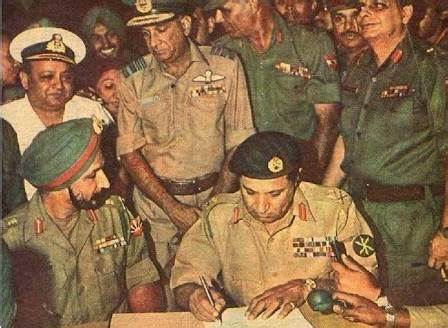
Thirteen Days
India’s superior air force destroyed Pakistan’s ability to fly, while their navy cut off access to the west. In the east, the Mukti Bahini refused to let Pakistan advance or even leave, successfully carrying out Operation Jackpot. In just 13 days, without the support of the US or Richard Nixon—who was embroiled in his own struggles—Pakistan surrendered completely.
Ninety-three thousand Pakistani troops in Bangladesh laid down their weapons and conceded, marking the largest surrender since World War II. This surrender, formalized in the Simla Agreement, forced Pakistan to recognize Bangladesh’s independence in exchange for the release of their prisoners of war.
Army General and Prime Minister Yahya Khan became increasingly hated by his people after losing the war for Bangladesh’s independence. If he wasn’t despised before, his reputation deteriorated further. He was charged with genocide and placed under house arrest for the rest of his life, which ended the same year Bangladesh played its first international cricket match in 1979.
Conclusion
Journalist Gary Bass once wrote, “President Nixon liked very few people, but he did like General Yahya Khan.” This mutual endorsement speaks volumes about their relationship. Khan relinquished power on December 20th, 1971, but continued aiding Nixon in securing that historic meeting with China. One of his final acts was hosting a lavish party in his mansion, where he partied with an actress named “Black Pearl” and engaged in outrageous antics, reminiscent of Nero’s infamous behavior.
As for Abdul Halim Chowdhury Jewel, the legendary figure who aspired to become Bangladesh’s first cricket captain, his legacy lives on. He was posthumously awarded the Bir Bikrom for his bravery following Bangladesh’s liberation. Today, he is honored in stadiums and remembered by cricketers and fans alike. In 2015, forty-four years after his death, Ali Ahsan Mohammad Mojaheed, a former member of Bangladesh’s Parliament, was charged with Jewel’s murder and sentenced to death.
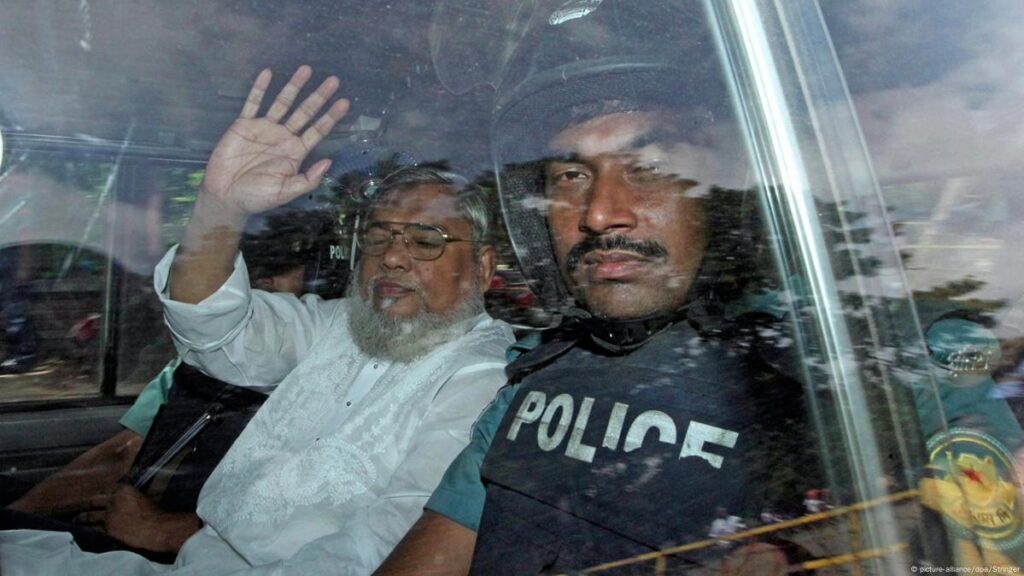
The Final Word on the Crack Platoon
Leaked documents and witness testimonies revealed that Ali Ahsan Mohammad Mojaheed worked for West Pakistan’s Al-Badr during the 1971 liberation war. This terrorist organization targeted Bengali nationalists, and Mojaheed was found guilty on July 17th, 2013, of genocide, conspiracy to kill intellectuals, torture, and abduction. Among his victims was Abdul Halim Chowdhury Jewel, who suffered at his hands. After exhausting all appeals, Mojaheed was executed on November 22nd, 2015, at 12:45 AM at Dhaka Central Jail, finally bringing justice to Jewel’s torture and murder.
Somebody cue up “Here Comes the Sun” by George Harrison.
The Remarkable Story of the Compton Cricket Club
The Compton Cricket Club established itself in 1995 among a revolutionary homeless community called Dome Village in downtown Los Angeles. Dome Village, brainchild of civil activist Ted Hayes, was based on his 1984 “Justiceville” tent city project. Learn about their story here.



